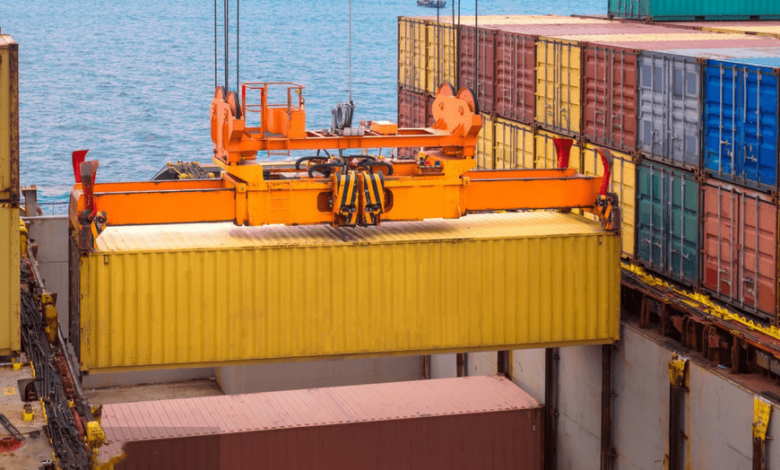The Role of Crane Attachments in Modern Material Handling

In today’s industrial landscape, efficiency, safety, and cost-effectiveness are key priorities in material handling. Cranes play an essential role in lifting and transporting heavy loads, but their versatility is significantly enhanced by the use of specialized crane attachments. These attachments not only improve the functionality of cranes but also make lifting tasks safer and more precise, reducing risks and enhancing productivity across various industries.
Understanding Crane Attachments
A crane attachment is an accessory designed to extend the capabilities of a crane, enabling it to handle specific types of loads more efficiently. These attachments are commonly used in construction, manufacturing, logistics, and port operations, allowing cranes to adapt to a wide range of material-handling requirements.
For instance, while a standard crane hook is sufficient for general lifting tasks, more specialized jobs—such as handling delicate materials, bulk goods, or irregularly shaped objects—require purpose-built attachments. By using the right attachment, businesses can reduce labor costs, increase safety, and improve operational efficiency.
Types of Crane Attachments and Their Benefits
Lifting Beams and Spreader Bars
Lifting beams and spreader bars are designed to distribute the weight of a load more evenly, reducing stress on the lifted object and improving stability. These attachments are particularly useful for handling long or bulky materials such as steel beams, pipes, and precast concrete sections.
Benefits:
- Prevents load deformation by distributing weight evenly
- Enhances crane stability during lifts
- Reduces strain on lifting slings and cables
Pallet Forks
Pallet forks transform cranes into material-handling machines capable of lifting and transporting palletized goods. This attachment is widely used in warehouses and construction sites where forklifts may not have access.
Benefits:
- Enables safe lifting of palletized loads
- Increases efficiency in warehouse and logistics operations
- Reduces dependency on additional lifting equipment
Grab Buckets
Grab buckets are ideal for handling loose bulk materials such as sand, gravel, and scrap metal. These buckets come in different designs, including clamshell buckets and orange-peel grapples, depending on the type of material being handled.
Benefits:
- Enables efficient bulk material handling
- Reduces manual labor and speeds up loading/unloading processes
- Minimizes material spillage and wastage
Vacuum Lifters
Vacuum lifters use suction technology to lift and move delicate or non-porous materials such as glass sheets, metal panels, and composite boards. These attachments are commonly used in the automotive and construction industries.
Benefits:
- Prevents damage to delicate surfaces
- Provides a secure grip without the need for mechanical clamping
- Reduces the risk of worker injury by automating lifting tasks
Magnet Lifters
Magnet lifters are used to handle ferrous materials, such as steel plates and scrap metal, in manufacturing plants and scrapyards. These attachments can be either permanent or electromagnets, depending on the required lifting capacity and application.
Benefits:
- Allows for quick and easy lifting of metal objects
- Improves safety by eliminating the need for slings and hooks
- Increases efficiency in metalworking and recycling industries
Man Baskets
Man baskets, or personnel platforms, are designed to lift workers to elevated positions safely. These attachments are commonly used in maintenance, construction, and inspection tasks where scaffolding or aerial lifts are impractical.
Benefits:
- Provides a stable and secure platform for workers
- Enhances safety by reducing fall hazards
- Increases accessibility for high-reach tasks
How Crane Attachments Improve Safety and Efficiency
The integration of crane attachments into material handling operations significantly enhances workplace safety and efficiency. By selecting the right attachment, companies can minimize risks associated with manual handling, reduce downtime, and optimize workflow processes.
Safety Improvements:
- Reduces the risk of accidents by providing better load control
- Ensures compliance with industry safety regulations
- Minimizes physical strain on workers
Efficiency Gains:
- Reduces handling time, increasing overall productivity
- Lowers operational costs by eliminating the need for additional equipment
- Enhances precision in lifting and placement
Choosing the Right Crane Attachment
Selecting the appropriate crane attachment depends on several factors, including the type of load, environmental conditions, and operational requirements. Businesses should consider the following when choosing an attachment:
- Load Characteristics: Weight, size, shape, and material composition
- Crane Compatibility: Ensuring the attachment matches the crane’s capacity and specifications
- Workplace Conditions: Space constraints, weather conditions, and regulatory compliance
Crane Attachments in Port and Industrial Applications
Port operations and industrial sectors rely heavily on specialized crane attachments for efficient cargo handling. One example is the Rail Mounted Container Gantry Crane, which is equipped with spreader beams specifically designed for handling shipping containers. These cranes and their attachments play a crucial role in global trade, ensuring the smooth movement of goods across supply chains.
Additionally, crane hooks and lifting clamps are widely used in steel manufacturing and heavy industries to secure and transport heavy-duty materials with precision and safety.
Conclusion
Crane attachments are indispensable tools that enhance the functionality, safety, and efficiency of lifting operations across multiple industries. By investing in the right attachments, businesses can optimize their workflows, improve workplace safety, and achieve significant cost savings. As industrial technology continues to evolve, the development of advanced crane attachments will further revolutionize material handling, paving the way for more efficient and automated lifting solutions.




